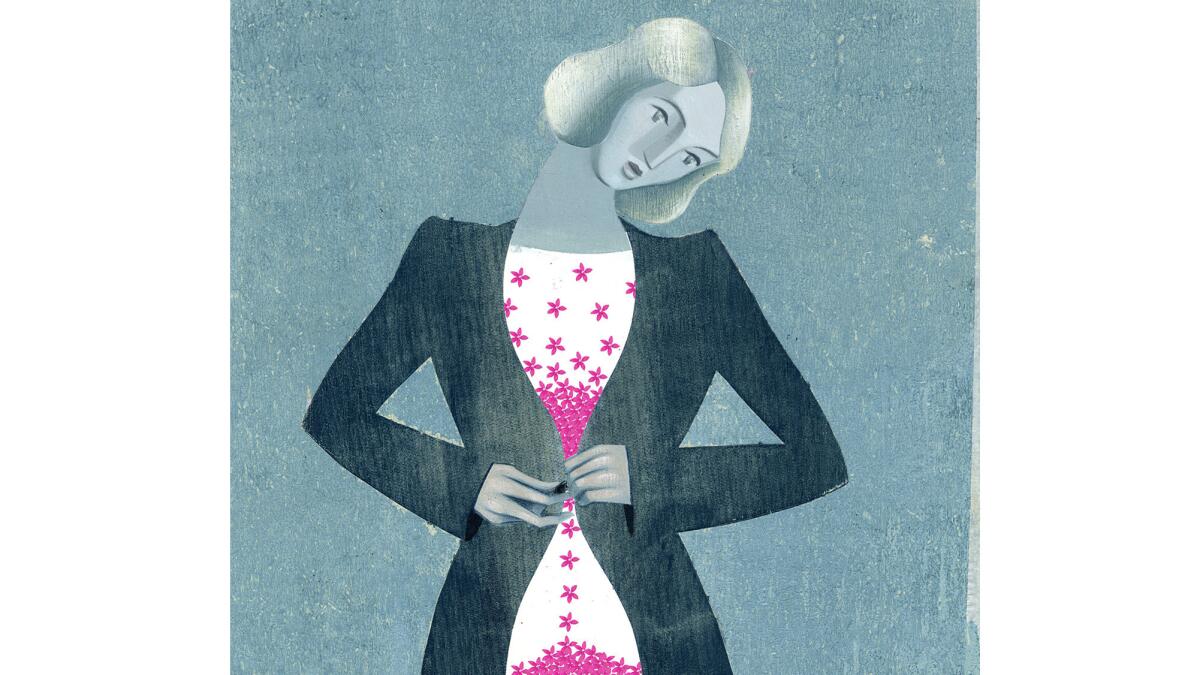Opinion: Mom tries to shield daughters from media’s beauty standards, gets burned

- Share via
Academics are always arguing that our standards of beauty, especially female beauty, are completely conditioned by our Western culture - and then they’re shocked, shocked when they encounter evidence that this isn’t so.
A case in point is Laura Tropp, professor of communications and media arts at Marymount Manhattan College, blogging this for Inside Higher Education:
“Because I am raising two daughters and I study media and gender, I have tried to be very careful about exposing my children to media representations of women and the body. I work to teach my daughters not to focus on looks but on inner beauty....
“I do not obsess over food choices or body image, I never make unflattering body comments about anyone’s body, and I’ve discussed inner beauty with my children. I limit their media consumption....
“Something has gone horrible wrong, though....
“I was getting dressed for work the other day when my eight-year-old told me that she didn’t find my skirt flattering. A few days later, my six-year-old said I shouldn’t really wear jean skirts; they don’t look all that good on me, she confided. Each morning as I get dressed, I feel like I’m heading down a catwalk: get rid of the stripes, that shirt is too tight, those shoes don’t go, you fit into that outfit better last month....
“My friend is having the same issue with her four-year-old, who told her she might be getting a little chubby. Clearly, the girls are still getting these ideas from somewhere, and our efforts to inoculate them are not going well.”
Now, let me make it clear that I don’t approve of children making critical remarks about the personal appearance of the parents who work like dogs to put a roof over their heads. That said, when a 4-year-old and a 6-year-old are able to discern what looks good on their mothers, including their optimum body sizes, aren’t they perhaps expressing an innate human capacity for responding to the aesthetic (or lack thereof) that transcends mere cultural conventions?
Scientific studies done by psychologist Judith Langlois have revealed that babies as young as two months old looked longer at color slides of attractive faces than they did of slides of more homely faces - and that children starting at age 1 preferred to play with attractive dolls rather than ugly dolls.
As for the adults who set such standards of attractiveness, evolutionary psychologist David Buss, in his book, “The Evolution of Desire,” cited a raft of cross-cultural studies of people of varied races and ethnicities who nonetheless uniformly agreed upon what constitutes a beautiful face: symmetrical features, lustrous hair, clear eyes, smooth skin and good teeth. Evolutionarily speaking, those features are all linked to youth and good health - signs of fertility and optimal capacity for reproduction.
Buss noted that there are some cultural differences in preferred body shapes, with some cultures finding slimmer women more attractive and others plumper women. But there is one consistency: Men of all cultures prefer women who have low waist-to-hip ratios. The hourglass figure, again indicating youth, good health and optimal reproductive capacity, is deemed universally lovely. And that means that women who are anything more than just a little bit zaftig are never going to be deemed beautiful, no matter how many “fat acceptance” and “love your body” campaigns are launched in order to make women feel better about pillow-y waists.
The universal human preference for relatively slender - not emaciated, just relatively slender - women has demonstrated itself in works of art that span millennia: Egyptian tomb paintings, the Caryatids on the Acropolis in Athens, medieval manuscript illustrations, Katsushika Hokusai’s depictions of the willowy geishas of the Edo period. This has been true of American culture as much as any other. Look at World War II-era magazines, with their photos of the slim young ladies in flirty dresses serving coffee to the servicemen at the USO, or the real Rosie the Riveters (not the Norman Rockwell illustration) in their wasp-waisted factory pants. And contrary to fat-acceptance myth, Marilyn Monroe was not a size 14. She was more like a size 2 in today’s sizes, as cultural critic Virginia Postrel pointed out in a BloombergView article about a 2011 auction of movie stars’ gowns. “Monroe was, in fact, teeny-tiny.”
So if we see young, slender and “conventionally” (translation: “actually”) attractive people advertising everything from clothes to cars to themselves in the media, it’s not cultural conditioning that’s to blame. It’s ourselves, our own human standards of beauty that the media are responding to. And if a child tells her mother that she doesn’t look as attractive as she could, that child might be onto something.
Charlotte Allen writes frequently about feminism, politics and religion. Follow her on Twitter @MeanCharlotte.
Follow the Opinion section on Twitter @latimesopinion
More to Read
A cure for the common opinion
Get thought-provoking perspectives with our weekly newsletter.
You may occasionally receive promotional content from the Los Angeles Times.










